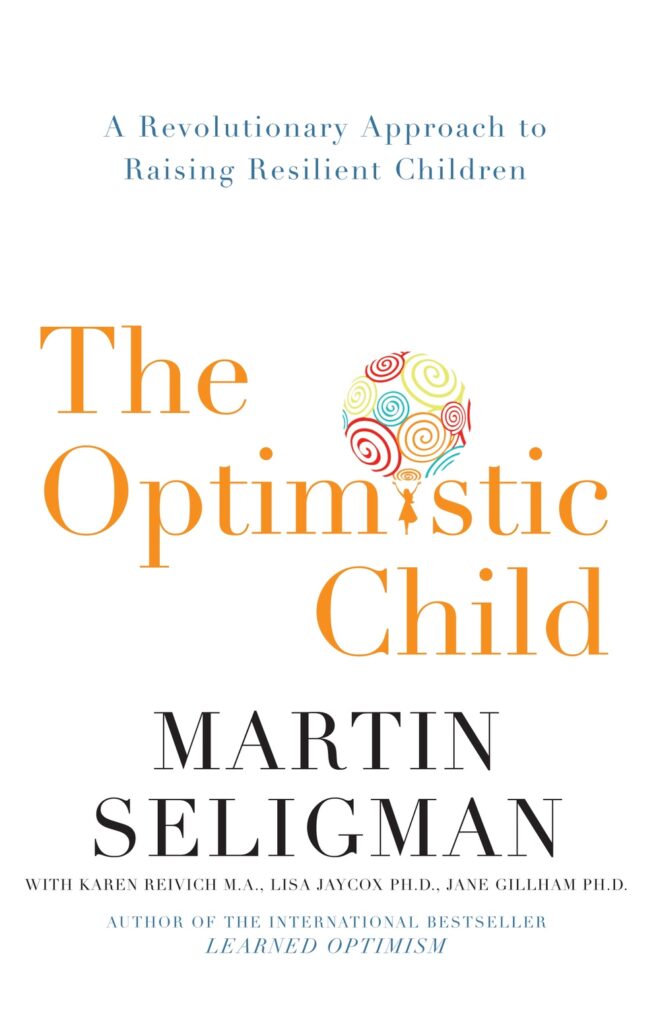Sharing my learnings from the book, The Optimistic Child by Martin Seligman
The Optimistic Child by Martin Seligman
In The Optimistic Child, Dr. Martin Seligman offers parents, teachers, and coaches a well-validated program to prevent depression in children. In a thirty-year study, Seligman and his colleagues discovered the link between pessimism — dwelling on the most catastrophic cause of any setback — and depression.
Seligman shows adults how to teach children the skills of optimism that can help them combat depression, achieve more on the playing field and at school, and improve their physical health. As Seligman states, ‘Teaching children optimism is more, I realized, than just correcting pessimism . . . It is the creation of a positive strength, a sunny but solid future-mindedness that can be deployed throughout life — not only to fight depression and to come back from failure, but also to be the foundation of success and vitality.’

- where you stand on the optimism-pessimism spectrum impacts every area of your life, including your mental health
- a person with a pessimistic mindset will dwell on the worst possible explanation for something bad happening (catastrophic thinking). These feelings can quickly lead to symptoms of depression.
- the state of feeling powerless to change your situation is known as learned helplessness. As a result, you often give up without even trying.
- when faced with adversity, optimists keep trying and aren’t easily defeated. This may explain. Why they’re less likely to suffer from depression
- Many parents and educators think that encouraging our children to feel good about themselves will raise optimism and lower risk of depression. But feelings are just one aspect of self-esteem. Self-esteem arises as a result of doing well. It comes from mastering skills, persisting with problems, meeting challenges and finding solutions to boredom and frustration.
- optimism is about how you think about the causes of events.
- causes of events: the pessimistic child believes that the things that cause bad events are permanent and can’t be changed. While an optimistic child believes it’s temporary so they find it easier to be hopeful about the future and makes them more resilient to depression
- pervasiveness: pessimistic children believes that the consequences of failure will be felt across many areas of their life while optimistic children believes the cause of failure is specific; doing badly in one respect doesn’t mean they’re doing bad overall
- when something goes wrong, for children at risk of depression, the answer tends to be “mused”. self-blame is the assigning of blame when things go wrong. Unfortunately, this leads to chronic guilt, low self-esteem and depression.
- the optimistic child takes accurate responsibility. This means she holds herself accountable for what has gone wrong but she doesn’t blame herself so much that she feels overwhelmingly guilty
- behavioral self-blame is another way optimistic children learn to accept their share of blame. It’s both temporary and specific.
- general self-blame is the way pessimistic child accept their blame. It’s both permanent and pervasive
- To encourage healthy self-blame, make sure you criticize your child’s behavior rather than their character
- you need to master four cognitive skills in order to learn to think more optimistically:
- thought catching – recognizing the negative thoughts that cross your mind when you feel bad
- evaluation – by closely looking at your negative thoughts, you’ll be able to evaluate the accuracy
- more accurate explanation – use this to dispute negative thoughts
- decatastrophizing – focusing on the most likely outcome
- in some cases, optimism alone won’t make the problems go away. Instead, children need to learn how to solve them
- slow down – teach your child that good problem solving means stopping and thinking for at least a minute before reacting
- perspective taking – thinking about why the other person acted that way and what that person was thinking when he/she did it
- goal-setting – what you want to happen, decide on a goal and lists all the ways you could achieve that goal


Leave a Reply